| Umělec magazine 2009/1 >> DO DEUTSCHE BANK AND GUGGENHEIM SUPPORT THE RUSSIAN NEW RIGHT? | List of all editions. | ||||||||||||
|
|||||||||||||
DO DEUTSCHE BANK AND GUGGENHEIM SUPPORT THE RUSSIAN NEW RIGHT?Umělec magazine 2009/101.01.2009 David Riff | reaction | en cs de es |
|||||||||||||
|
Something changed. Several months after the early 2008 discussion on Yahoo’s Grundrisse group—an event transpired that continues to reverberate throughout the art world. Whereas the 2007 Kandinsky Award was given to “Grundrisse” participant and activist Osmolovsky, this past year it was awarded to a very different sort of artist: Alexei Belyaev-Gintovt. Grundrisse contributor David Riff documented the situation right after it happened. Subsequent news items follow, tracing the echoes of the incident.
MOSCOW DECEMBER 11 2008. The "Project of the Year" nomination of Russia’s Kandinsky Prize was given to Alexei Belyaev-Gintovt for a series of nationalist paintings. This decision has sparked much controversy in the Russian art community, causing both a picket outside the awards ceremony and jeers from audience when the winner was announced. The Kandinsky Prize, billed as Russia’s top award, awards a sum of $52,000 to its chief nomination, a sum equivalent to the Turner Prize. It was founded in 2007 by the magazine Art Khronika, and has been sponsored by the Moscow-based holding company IDF Kapital and Deutsche Bank. The selection for the show is made by a jury of six, consisting of three experts from Russia and three from abroad. The international jury was divided, Kommersant Daily correspondent Milena Orlova reported. "I don‘t understand how such uninteresting, uninnovative work could receive such a prize," complained jury-member Jean-Hubert Martin, curator of France‘s National Museums. Fellow jury member Andrei Yerofeev also protested heavily against Belyaev‘s inclusion in the nomination‘s shortlist, although he had previously worked with the artist. Shalva Breus, the owner of Art Khronika magazine and representative of the prize‘s board, also confessed that he also voted against Belyaev-Gintovt and in favor of sots-art veteran Boris Orlov. Belyaev-Gintovt‘s nomination came from two Russian experts, the art historian Ekaterina Bobrinskaya, a proponent of a right wing interpretation of Futurism and Dada, and Alexander Borovsky, the head of the Contemporary Tendencies department at the Russian Museum in Saint Petersburg. Borovsky has been a particularly vocal in his support of Belyaev. When the internet portal openspace.ru raised the question whether an ultra-nationalist could win the Kandinsky Prize, Borovsky claimed that the jury had not considered the artist‘s political convictions, but says that he saw his painting as an example of what he called “state aestheticism.” “This artist plays at ‘state aesthetics,’ and I see an ironic distance here.” But, as an open letter published by Moscow activists last week puts it, “There is nothing playful in Belyaev’s calls for Russian tanks to roll on Tbilisi, to execute the Georgian president, to create a ‘Greater Serbia’ or to ‘liberate’ the former Soviet republics under the banner of a Eurasian (read: Russian) Empire.” Indeed, Belyaev-Gintovt has been deeply involved in radical right wing politics for quite some time. He began to drift to the right in the mid-1990s, and fell under the spell of far right-leaning philosopher Alexander Dugin, who has repeatedly expressed his admiration for the Nazi movement and his hope that in post-Soviet Russia there will finally emerge a truly “fascist fascism.” “Fascism is nationalism; not just any nationalism, but a revolutionary, insurrectional, romantic, idealist nationalism,” he wrote. Since the early 2000s, Dugin has shifted to a more “geopolitical” position, becoming a one-man think tank and media personality. His Eurasian Movement proposes the creation of a Eurasian empire that extends Russia‘s sphere of influence from Germany and France to Mongolia and parts of China, countering the “Atlantic” civilization of America, whom Dugin and his associates consider their main enemy. Dugin prefers to speak of Russia‘s conservative revolution: “the rehabilitation of conservative values, the rebirth of religious roots and national independence, the strengthening of Russian Orthodox identity, a mature Russian Orthodox fundamentalism, the rebirth of Russian positive nationalism.” Further quotes from Dugin and his followers can be found at the bottom of this page. Over the last five years, Dugin‘s views have converged with those of the Kremlin, culminating in the appointment of one of his self-proclaimed followers, Ivan Demidov to the post of chief ideologue of the United Russia party right after the presidential election in March 2008. Belyaev-Gintovt is a key member of Dugin‘s organization. According to its site, he heads its Youth Movement, and is its “chief stylist.” Belyaev-Gintovt‘s political engagement is most apparent in his photo-montages, shown at a visit to the Caucasus during the Russian intervention in Georgia this August, after which the artist proclaimed that “now a mountain road looks dull and drab without a column of Russian tanks.” The posters themselves feature a Russian woman in Neo-Traditionalist garb, wielding automatic rifles and axes, with slogans like, “We will take everything back!”; “Absolute Motherland.”; and “Our Jackboot is Sacred.” The canvases for which Belyaev-Gintovt received the “Project of the Year” nomination are also clearly engaged art and look like a cheap imitation of Leni Rieffstahl or Arno Breker. Shown at the Triumph Gallery in Moscow (which generally features artists who flirt with ultra-right wing aesthetics to titillate a glamorous clientele), Belyaev-Gintovt‘s paintings bear titles such as “Daughters of the Motherland,” and glorify imperial domination, blood, soil, and war in a consciously triumphant neo-Stalinist style, mixing crimson with gold leaf. This work has enjoyed commercial success, but its critical reception has been largely negative, and not only for political reasons. “From an artistic point of view, [Belyaev-Gintovt‘s paintings] looks like design perfect for the offices of loyal businessmen or government officials,” wrote Sergei Khachaturov of the daily Vremya Novostei. “The artist‘s style has been intentionally erased and made impersonal; the images are stamp-cut and cliched. [...] The most confounding thing is that notwithstanding the romanticizing of force and power, Belyaev-Gintovt‘s work is almost totally devoid of energy or genuinely felt emotion. More accurately, it is a decorative mummification of power.” Apparently two other members of the jury could not read any of the obvious political codes of Belyaev-Gintovt‘s work, nor did the artistic quality of the work itself raise any real doubts. As Kommersant Daily reports, both Friedhelm Huette of Deutsche Bank AG and Valerie Hillings, curator at the Guggenheim, voted in favor of giving the “Project of the Year” award to Belyaev-Gintovt, claiming that they made their choice based on purely aesthetic criteria, and that they were unaware of the context. Coming from Hillings, this seems particularly difficult to believe, as she curated the “Russia!” exhibition held at the Guggenheim in 2005. As for Huette, witnesses at the reception held after the awards ceremony say that, when his choice was challenged, he loudly argued, “What’s wrong with patriotism?” From Milena Orlova’s Article for the Kommersant Daily: “Belzaev-Gintovt seemed morally prepared to be booed off and shamed. Indeed, according to the manifesto Ecology of Arts posted on on Belyaev-Gintovt's website, ‘Under the guise of engaged art, a totalitarian sect named open society became active in Russia. The new world order followers—modernists, artists, and arts critics—cultivate plebeian permissiveness, blasphemy, and desecration of believers' feelings, and grossly violate human rights as they practice sexual misconduct and destroy icons. Modernists are pushing the Russians into infernal darkness… We are here to obstruct these destroyers of values…’ and so on in the same manner. For some reason, I believe that this manifesto (which is, by the way, not political, but artistic) was not translated for the foreign members of the jury. Otherwise, they would hardly dare to give the prize named after Vasili Kandinsky, one of the pillars of modernism, to the artist who, in his aesthetic, reproduces the beliefs of prosecutors of degenerative art.” The only positive aspect of this controversy was the unexpected unity formed amongst those opposing Belzaev-Gintovt’s nomination. Giving this prestigious prize to an artist with extreme right wing, nationalist views—which can be considered a legitimization of his views at a state level—caused an indignation felt by both the Grundrisse mailing list participants and general representatives of the Russian artistic community. The widespread outcry of disgust can be seen in the numerous internet and print articles attacking this decision. In response, several participants of the international jury have released statements. Links Open letter of Chto delat and Socialist Movement «Forward» chtodelat.wordpress.com/2008/12/08/an-open-letter-on-the-2008-kandinsky-prize/ John Varoli, Jeers, Cheers Greet Kandinsky Winner, Painter Beliayev-Guintovt, www.bloomberg.com/apps/news?pid=20601120&sid=arBrvxOxB4Qc&refer=muse Kirill Medvedev, Kandinsky is Ashamed. Vpered and Chto delat Picket the Kandinsky Prize chtodelat.wordpress.com/2008/12/13/kandinsky-is-ashamed-vpered-and-chto-delat-picket-the-kandinsky-prize/#more-470 Quotes from Alexander Dugin and the Eurasian Movement’s website …We are a Union of Masters, the new overlords of Eurasia. We will affirm our will sovereignly, unflinchingly, inflexibly. [Our] supremacy begins at home. It then spreads to [countries] near and far, in ever wider and wider circles, until it reaches the maritime borders of the continent. We are Eurasians precisely because our will overturns frontiers. It is knowingly wider than what is allotted, permitted, measured, acceptable… …Our goal is absolute power. …Because we are the lords of the earth, we are the children and grandchildren of the lords of the earth. Nations and countries bowed before us; our palm encompassed half the world; our soles trampled the mountains and valleys of all the continents of the world. We will take it all back. …Everything that comes from America is impregnated with poison. Everything that is said there is falsehood and contagion. Everything that is done there should be crushed and thrown out. In order to preserve our “self” we must introduce strict anti-American hygiene… …the decisive Hour of Eurasia has already struck… The GREAT WAR OF THE CONTINENTS is already approaching its final point. …serving the Russian spirit, the Russian faith, the Russian tradition is the inner imperative of those who recognize themselves as full-fledged sons and daughters of the people. Among the new oprichniks, the value of one’s country, of the Fatherland, its power and might, become absolute values, which in turn enable one to take the measure of everything else. Russia is the true measure of things. That which fortifies, unites, and strengthens her and her people is good; everything that weakens her is evil. Thus the “ethics of the oprichniks” is born. And even if the majority of Russia’s citizens do not think in this manner, contemporary differentiated people should think and act precisely in this way. Motherland Rus above all. …Fascism is nationalism, but it is not just any sort of nationalism; rather, it is revolutionary nationalism—mutinous, romantic, idealistic. It appeals to the great myth and the transcendent idea; it strives to incarnate the Impossible Dream in reality, to beget a society of heroes and the Superman, to transform and transfigure the world. …The essence of fascism is a new hierarchy, a new aristocracy. Its newness consists precisely in the fact that [its] hierarchy is erected on natural, organic, clear principles: dignity, honor, courage, heroism. …Russian fascism is not only several parties and movements that share a similar direction. It is the condition of social thought today. It is the combination of natural national conservatism and the passionate desire for genuine change. …The blinding dawn of the new Russian Revolution—fascism as limitless as our lands, and red as our blood… The quotes above were compiled by Kirill Medvedev and translated by Thomas Campbell in the material cited above. Sources (in Russian): www.rossia3.ru/katehizis.html www.rossia3.ru/programma.html www.rossia3.ru/3.html arcto.ru/modules.php?name=News&file=article&sid=1252 www.my.arcto.ru/public/templars/arbeiter.html
01.01.2009
Recommended articles
|
|||||||||||||
|
04.02.2020 10:17
Letošní 50. ročník Art Basel přilákal celkem 93 000 návštěvníků a sběratelů z 80 zemí světa. 290 prémiových galerií představilo umělecká díla od počátku 20. století až po současnost. Hlavní sektor přehlídky, tradičně v prvním patře výstavního prostoru, představil 232 předních galerií z celého světa nabízející umění nejvyšší kvality. Veletrh ukázal vzestupný trend prodeje prostřednictvím galerií jak soukromým sbírkám, tak i institucím. Kromě hlavního veletrhu stály za návštěvu i ty přidružené: Volta, Liste a Photo Basel, k tomu doprovodné programy a výstavy v místních institucích, které kvalitou daleko přesahují hranice města tj. Kunsthalle Basel, Kunstmuseum, Tinguely muzeum nebo Fondation Beyeler.
|







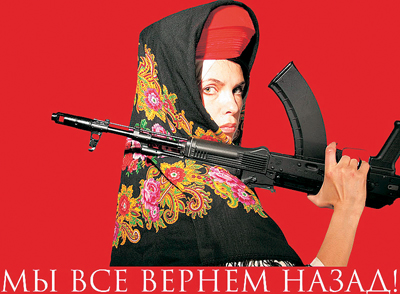
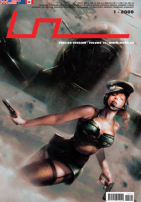

















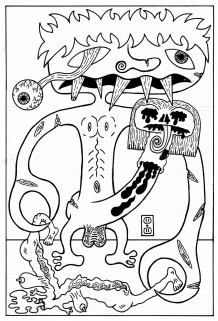




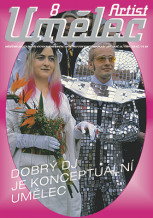
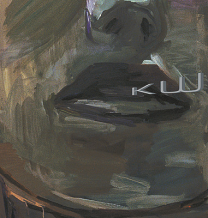
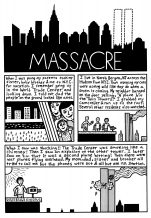
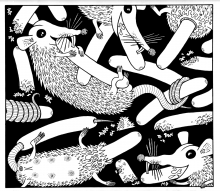


 New book by I.M.Jirous in English at our online bookshop.
New book by I.M.Jirous in English at our online bookshop.
Comments
There are currently no comments.Add new comment